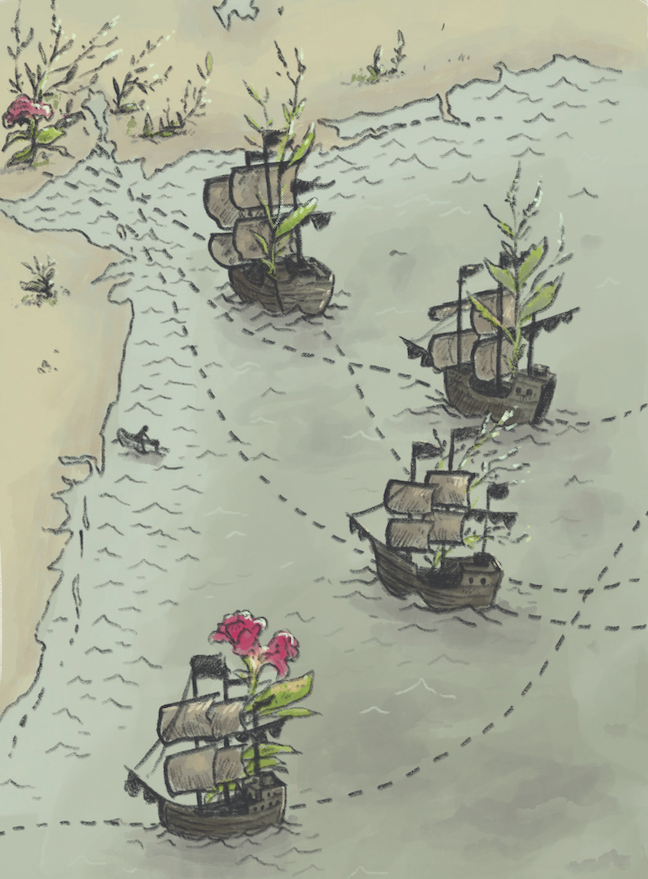A study of the plants and trees around our ports can tell us many things about the history of colonialism, commerce and migration
Illustration: Joe Latham
Cargo ships have to weigh a certain amount in order to sail well. When travelling without goods, this weight is attained by the use of ballast – any heavy material loaded into the bottom of the hull. From the late 17th century to the early 1900s, that weight was made up from waste materials gathered near port. This ‘dirt’ would be dumped at the boat’s destination and some of the seeds, plants and whole trees it contained would germinate. Trade routes can thus be determined through surveys of the non-native plants around ports - so called ‘ballast flora’.
Artist Maria Thereza Alves, creator of Bristol’s Ballast Seed Garden writes how the study of these plants, ‘reveals patterns, temporalities and instruments of colonialism, commerce and migration going back many centuries’.
In 2017, a team at Rutgers University concluded that about 80 of the species identified in the first formal surveys of the ballast heaps found in late-19th century American port cities were still present in the country’s flora today. These survivors have clearly made lives for themselves in the ‘nation of immigrants’, giving a very literal meaning to the Statue of Liberty’s welcome to ‘the wretched refuse of your teeming shore’.
Words: Guy Lochhead

